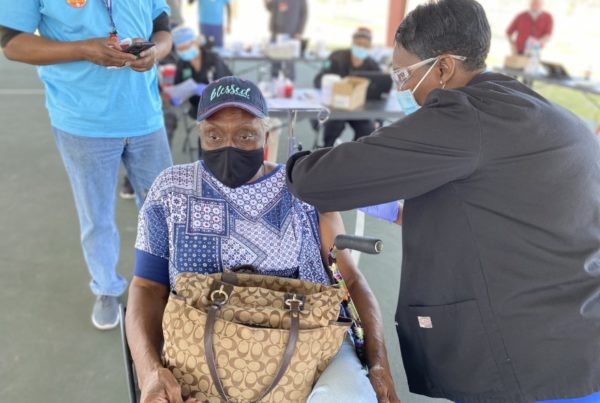When it comes to Texas education, there’s a lot to hope for in the latest budget proposal from state lawmakers.
Right now, there’s about $18 billion in federal COVID-19 funds earmarked for education. That’s $5.5 billion for public education out of the second round of federal stimulus funding, and $12.4 billion from the third round — all on top of whatever money is allocated from the state coffers.
But education advocates are nonetheless concerned: So far, that money isn’t flowing down, and the worry is it might be used to plug other holes in the state budget. That’s what happened to roughly $1.3 billion from the first round of federal COVID-19 relief.
“The money that the schools got was basically money that they would have gotten anyway had it been a normal year,” said Jacqueline Hailey, minister of Houston’s New Hope Baptist Church and a public policy advocate with The Metropolitan Organization. “But it was not a normal year, because they had to have PPE. They had to buy technology. All of those are huge expenditures.”
Despite a massive influx of money from the federal government, lawmakers are behaving cautiously as they come up with the 2022-2023 state budget — a large chunk of which is meant to recoup all of those pandemic-realted education expenses.
In most other states, the money has been going directly to public schools, according to Libby Cohen, director of advocacy for Raise Your Hand Texas, an education lobbying organization.
“It’s important to note that the way the federal legislation is structured, 90% of those education relief dollars are intended to go directly to school districts,” Cohen said. “And state agencies can hold up to 10%, which is still a significant amount of money, but the intent of the federal law, and what we see happening in other states all across the country is that the vast majority of those funds are being flowed directly to schools.”
But political scientist Brandon Rottinghaus of the University of Houston says that Texas state lawmakers probably aren’t holding the money back by choice.
“This budget is to some degree written on faith,” Rottinghaus said. “That’s on faith because it’s not clear, one, when that money will come, two, how much of that money will come, and three, whether there’ll be strings attached to that money, which will require them to budget for extra funds to be able to get the money that the feds are promising.”
It’s been just a week since the Texas Senate passed Senate Bill 1, its version of the FY 2022-2023 budget. The Senate’s version includes $117.9 billion in general revenue funds. Next week, the House will vote on its own version, with $124.1 billion in general funds.
Both versions overshoot what the Texas Comptroller says lawmakers have available to spend: $112.5 billion. That’s largely because they’re hoping that federal COVID-19 relief will close the gap.
The problem is Congress isn’t working on the same timeframe as the Texas Legislature. And it’s not clear when the state can expect to receive better guidance on how to use its share.
The regular legislative session ends on May 31. And lawmakers have to agree on a budget before it does – or they’ll be back in Austin this summer for a special session.
When the Texas House Appropriations Committee took up its version of the budget early this week, one thing both Republicans and Democrats seemed to agree on was that their version did right by Texas public schools.
“The committee substitute for Senate Bill 1 responsibly funds items critical to all Texans, including public education, public health, and public safety, and I think you should be really proud of the work that you have done,” said state Rep. Greg Bonnen, R-Friendswood, who chairs the committee.
The committee wound up passing its version of the budget unanimously.
And yet there were clearly some who hoped the final version of the bill, to be negotiated with the Senate, would do more.
“I’m hopeful that we’ll be able to determine at some point here with federal funds and whatever’s available to us ways that we can restore some of those funds and address the continuing costs that all of these agencies are experiencing with the COVID-related expenses,” said state Rep. Donna Howard, D-Austin.
That’s a hope that’s shared by education advocates across Texas.
“What we’re hoping is that all $17.9 billion for public schools from the federal stimulus actually flows to our students and our schools,” said Bob Popinski, director of policy for Raise Your Hand Texas, “so that they can perform all of the interventions and programs that they need to kind of stem the learning loss from COVID.”















